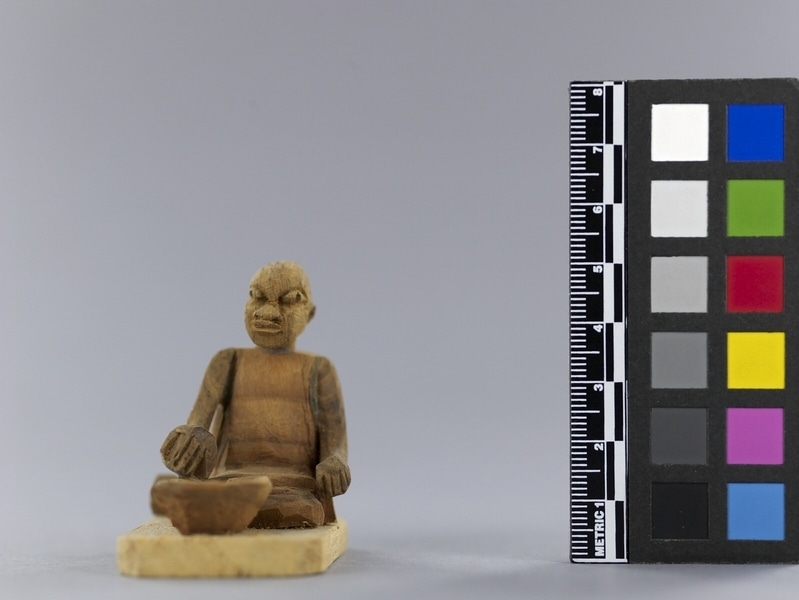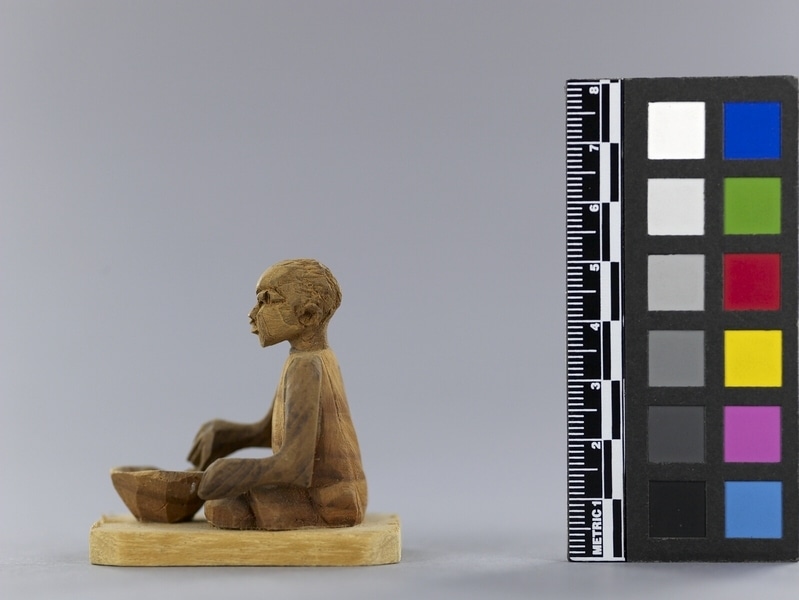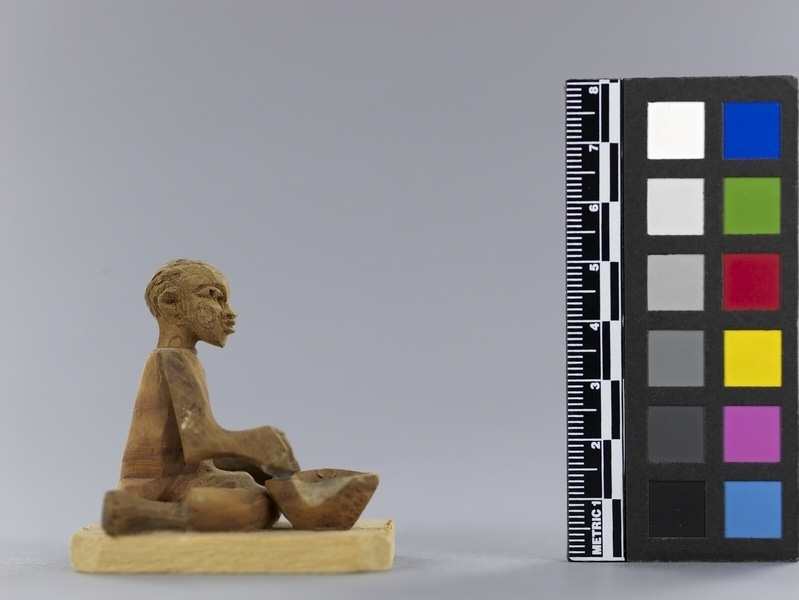Thorn Carving Item Number: K2.116 from the MOA: University of British Columbia





Description
Sitting figure representing a child with a bowl in front, waiting for breakfast. Figure is sitting on the floor with its left knee bent so that the left leg is lying in front and with is right knee bent so that the right leg is lying at the side. The elbows are bent so that the arms are resting just above the knees. Clothes are of a slightly lighter wood colour than the body. On a wood base.
History Of Use
Thorn carvings are miniatures depicting a variety of scenes from Nigerian life. The carvings first began to be made circa 1930. The thorns vary in size; they can be as large as 12.7 cm long and 9.6 cm wide. The thorn wood is comparatively soft and easy to carve; they are traditionally carved by men.
Cultural Context
craft; tourist art
Specific Techniques
The light yellow-brown thorn and the dark brown thorn come from the ata tree; the light red-brown thorn comes from egun trees. The parts are glued together with viscous paste made that was made from rice cooked with water.
Narrative
Collected by Dugal MacGregor while he was a teacher at the University of Accra, 1970.
Item History
- Made in Viame, Ghana
- Collected during 1970
- Owned by Dugal Macgregor and Sue Macgregor before April 1970
- Received from Dugal Macgregor (Donor) and Sue Macgregor (Donor) during April 1970
What
Who
- Culture
- Yoruba ?
- Previous Owner
- Dugal Macgregor and Sue Macgregor
- Received from
- Dugal Macgregor (Donor) and Sue Macgregor (Donor)
Where
- Holding Institution
- MOA: University of British Columbia
- Made in
- Viame, Ghana
When
- Collection Date
- during 1970
- Ownership Date
- before April 1970
- Acquisition Date
- during April 1970
Other
- Item Classes
- carvings & sculpture
- Condition
- fair
- Accession Number
- 0166/0020